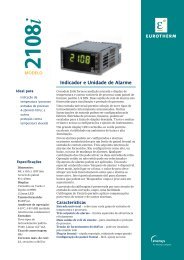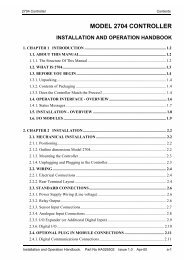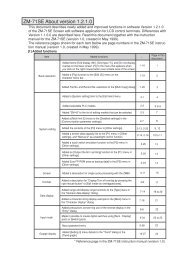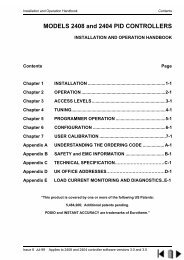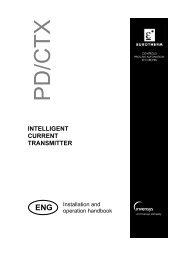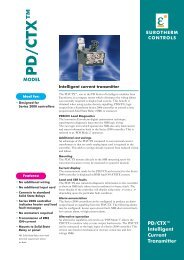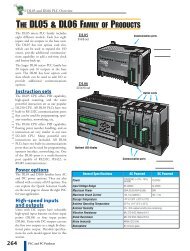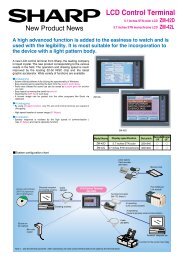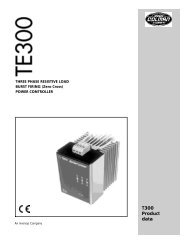Series 2000 Communications Handbook - Soliton
Series 2000 Communications Handbook - Soliton
Series 2000 Communications Handbook - Soliton
You also want an ePaper? Increase the reach of your titles
YUMPU automatically turns print PDFs into web optimized ePapers that Google loves.
<strong>Series</strong> <strong>2000</strong> <strong>Communications</strong> <strong>Handbook</strong>Digital <strong>Communications</strong> HardwareThe following are a selection of cables suitable for RS 232 communication systems listed inorder of decreasing quality;Part numberAlpha Belden Description8102 2 twisted pairs with aluminium foil screen plus a 65% coveragecopper screen **5472 9502 2 twisted pairs with aluminium foil screen *2403 8771 3 separate wires with aluminium foil screen **2.4. GROUNDINGEnsure all ground points are noise free.To reduce interference from external electrical signals, ground the cable screen at a singleground point. There must not be multiple ground paths in a single cable run. When using aKD485 <strong>Communications</strong> Adapter unit, do not connect the screen from one side of theinterface to the other. Rather, ground each of the cables separately at a local ground point.The digital communication outputs of all <strong>Series</strong> <strong>2000</strong> instruments are isolated. To avoidcommon mode noise problems, connect the common line to ground at one point through a100 ohm, 1/4W, carbon composition resistor. The resistor will limit the ground current.2.5. WIRING GENERALRoute communications cables in separate trunking to power cables. Power cables arethose connecting power to instruments, relay or triac ac supplies and wiring associated withexternal switching devices such as contactors, relays or motor speed drives.Communication cables may be routed with control signal cables if these signal cables are notexposed to an interference source. Control signals are the analogue or logic inputs andanalogue or logic outputs of any control instrument.Do not use redundant wires in the communications cable for other signals.Ensure cable runs have sufficient slack to ensure that movement does not cause abrasion ofthe insulating sheath. Do not over tighten cable clamps to avoid accidental multiplegrounding of the screen conductors.Ensure that the cable is ‘daisy chained’ between instruments, i.e. the cable runs from oneinstrument to the next to the final instrument in the chain.<strong>Series</strong> <strong>2000</strong> <strong>Communications</strong> <strong>Handbook</strong> Part No HA026230 Issue 2.0 Feb-00 2-5



